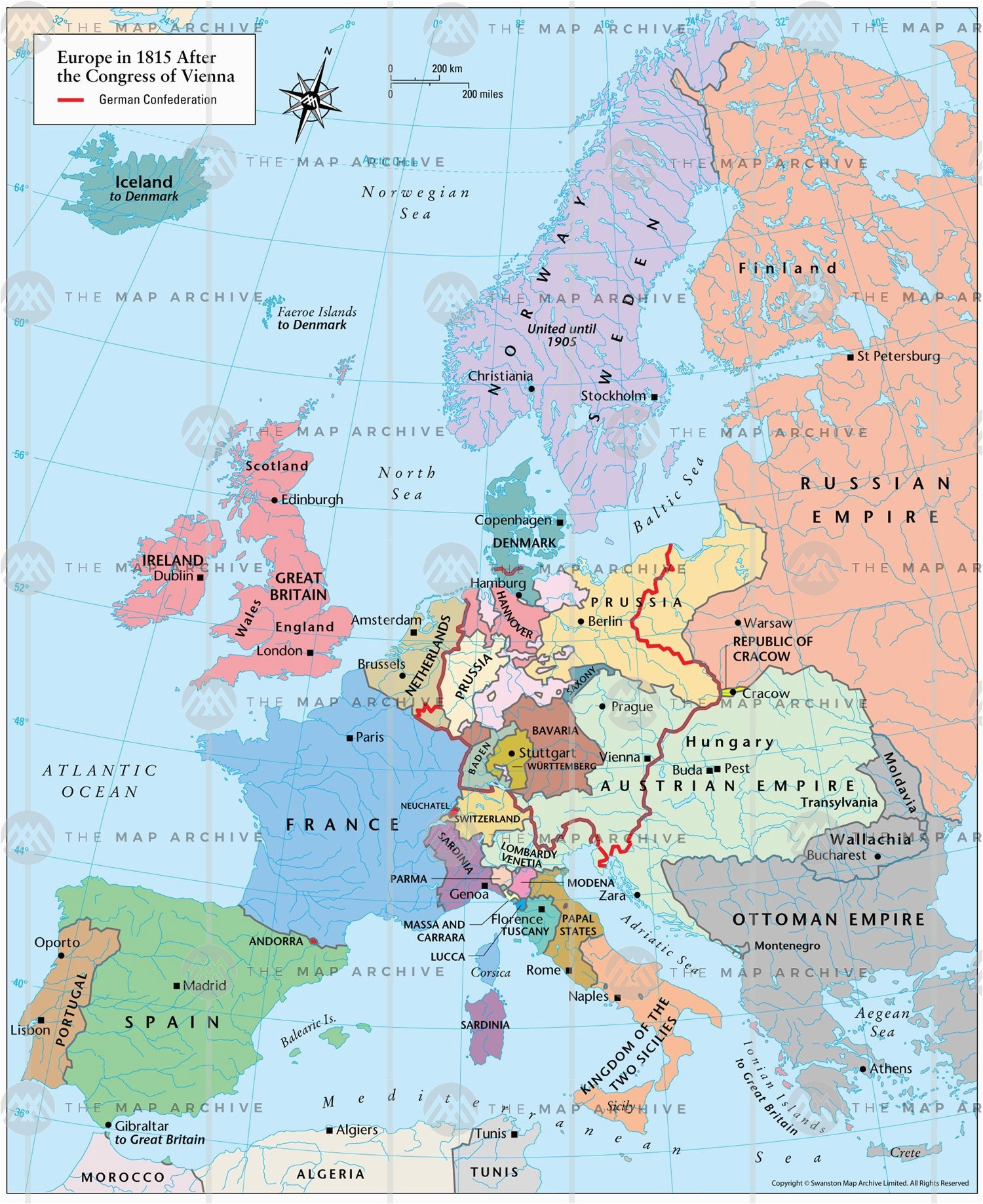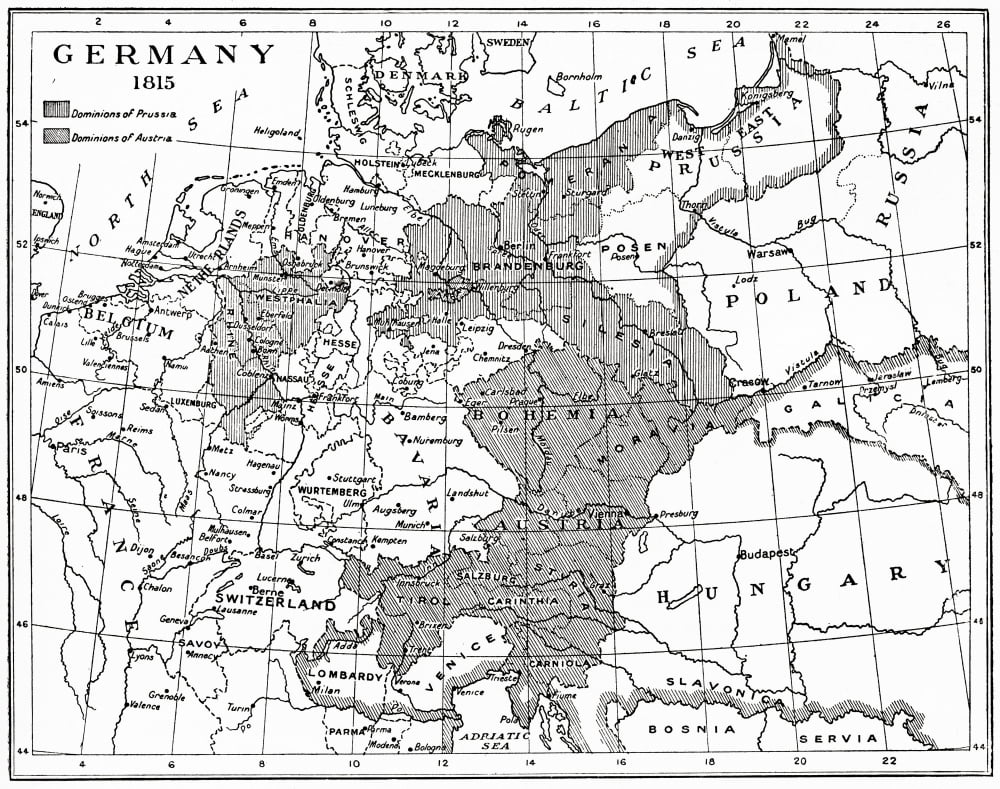
Its empire was expanding in all directions: to the east through Siberia on its way to the Pacific Ocean and then beyond into modern-day Alaska, to the west and into the area of the Ukraine, the Baltic states and parts of Poland, and to the south at the expense of the Ottoman Empire. In 1815, at the Congress of Vienna (the meeting of the monarchies that had defeated France) Russia was the most powerful state at the negotiating table. Russia had become the European superpower in the east. From then on, nothing could be done in Europe without thinking about how Russia would react. This power was severely tested and ultimately confirmed by Russia’s defeat of Napoleon in 1812. By the middle of the 18th century, Russia had developed into a major European power. Peter the Great prioritized practical education, science, and technology. His reforms strengthened Russia’s army and navy and provided a firmer basis for the empire’s emerging bureaucracy and economy. Peter the Great set Russia on a new course. Petersburg was also the founded of Russia’s first navy. Wealth and power, Peter the Great understood, came from the sea, and thus the founder of St. Petersburg emphasized Russia’s increased connection to, and understanding of, the world’s economy. Petersburg represented Peter the Great’s desire to join the European maritime world, and the 17th and 18th centuries were primarily a era of maritime power. Peter the Great had made tours of European cities and was captivated specifically by the bustle and wealth of the Dutch port city of Amsterdam and its surrounding ship-building industry. First, he wanted to indicate his desire to join Europe, linking Russia to Europe via the Baltic Sea.

Peter the Great created this new imperial capital for two principle reasons.

Petersburg out of the murky swampland of the river Neva into his grandiose imperial capital. It was Peter the Great, the first powerful tsar in the long history of the Romanov Dynasty, who built the great city of St. Nicholas II came from the longest unbroken ruling family dynasty in Europe, stretching all the way back into the 17th century, when his ancestor, Peter the Great (1672-1725), moved Russia out of the Central Asian world and squarely into the European sphere. USM Open Source History Text: The World at War: World History 1914-1945 Main Menu Introduction: A Mural as Window On Diego Rivera's Detroit Industry The World Around 1914, Part I: the Journey of Young Gandhi The World Around 1914, Part II: The Era of Nationalism and Imperialism (1848-1914) The First World War The Long Russian Revolution (1917 – 1929) The Decline of the West? Europe from 1919 – 1929 A New Middle East: The Rise of the Middle East State System China Between Qing Collapse and WWII Latin America Between Boom and Bust (1911-1929) Africa Under Colonial Rule: Politics and Race from 1914‐1939 The United States from The First World War to the Great Depression The Great Depression Three Varieties of Radicalism in the 1930s: Nazi Germany, Stalinist Russia, and Imperial Japan Three Responses to Modernity: Ho Chi Minh, Ibn Saud, and Getulio Vargas The Second World War Seth Rogoff 5f001fc099cd635507b143be056702764af6929c Map of Europe after Congress of Vienna (1815) 1 T22:35:54-07:00 Seth Rogoff 5f001fc099cd635507b143be056702764af6929c 19237 1 plain T22:35:54-07:00 Seth Rogoff 5f001fc099cd635507b143be056702764af6929c This page is referenced by:

Please enable Javascript and reload the page.

This site requires Javascript to be turned on.


 0 kommentar(er)
0 kommentar(er)
